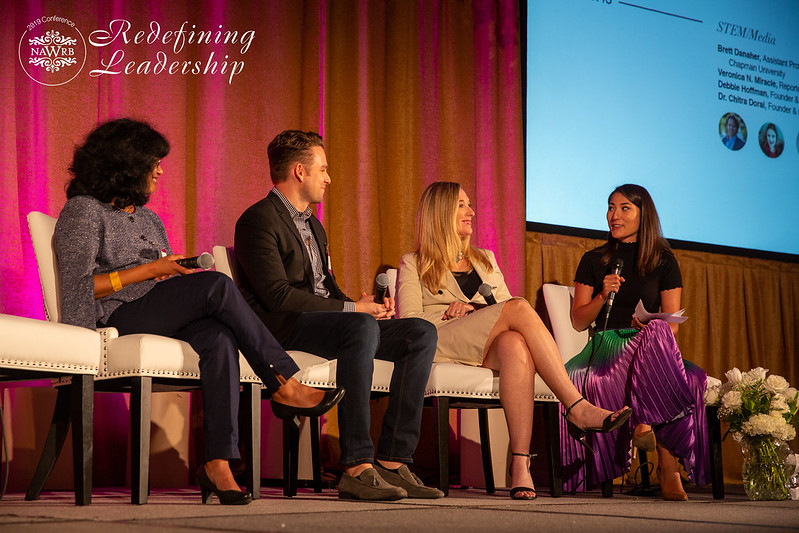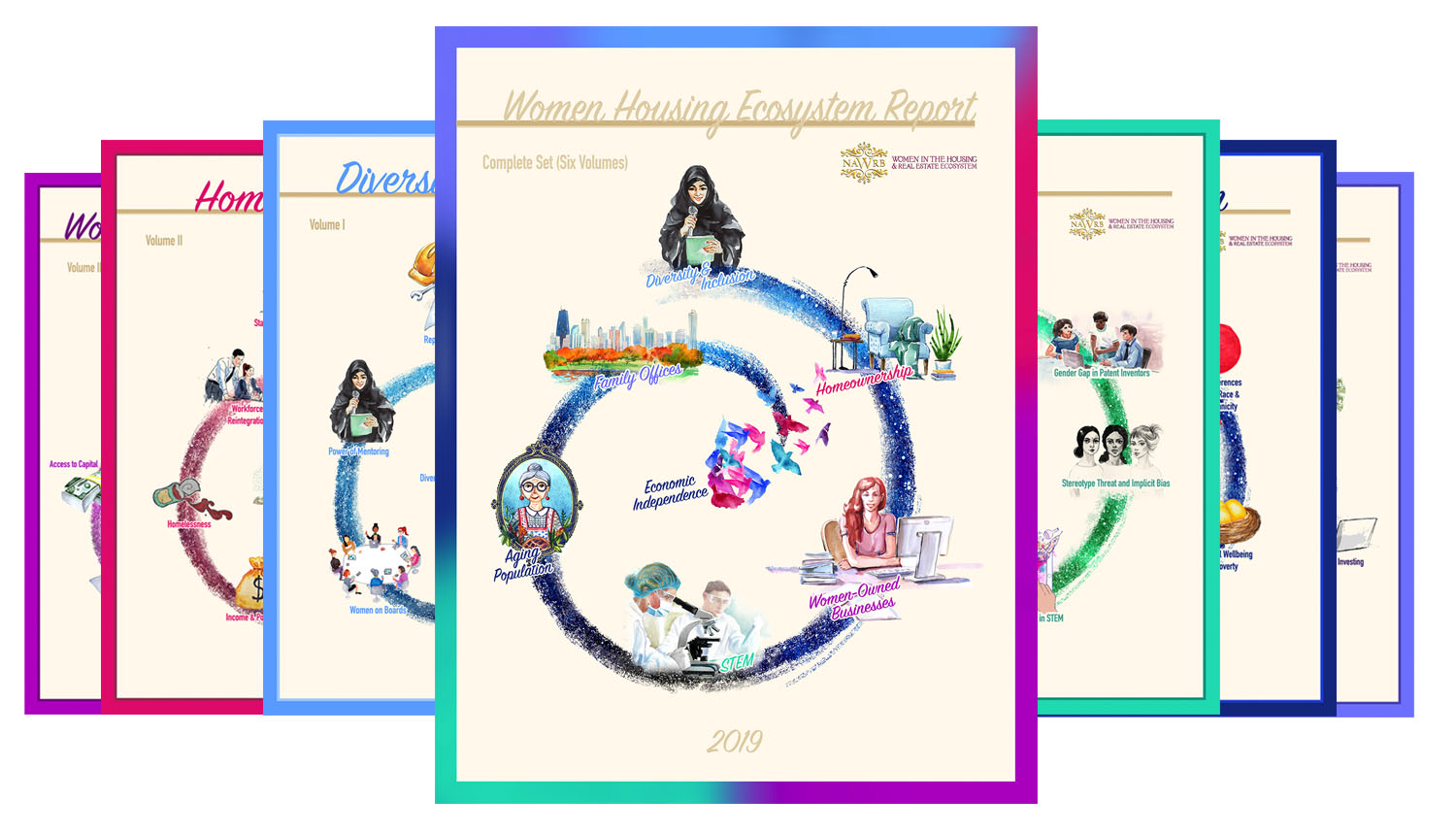Now that we are spending a lot of time at home, streaming services such as Netflix, Amazon Prime, Hulu, and Disney+ are being used more than ever. Did you ever wonder about the data science that influences marketing in the entertainment industry, such as how networks know what kinds of shows you will like or won’t? In a presentation titled “Marketing Science in Entertainment: A Machine Learning Approach,” Brett Danaher, Assistant Professor of Economic and Management Science at Chapman University, gave an informative introduction to marketing science as it pertains to his work, and its potential uses for the housing and real estate ecosystem. Dr. Danaher publishes research in data science and entertainment strategy and consults for large entertainment firms such as NBC Universal, Disney, Spotify, EMI Music, Harper Collins, BBC Studios and Masterclass. Watch the video at the link!

Know an Incredible Woman Preserving the
Quality of Life During COVID-19?
Submit your story today!
Read More

Consulting & Branding Opportunities
Grant your business access to insider,
proven knowledge to improve the quality of your procured
services and maximize business performance.

If you need D&I
Contact Us!
A Team Focused on Bring Diversity and Inclusion to Every Level
Learn More

#1 Top Real Estate Influencer
Desiree Patno
Diversity & Inclusion, Quality of Life, Know the Rules of the Game ®
Your Next Event
Grow Your Business
NAWRB: An SBA Resource
NAWRB is listed as a women-owned business resource for the SBA.
Check It Out
NAWRB Aging Population
Help Protect Elders
from Financial Abuse
Over $36.5 billion a year is lost annually in the U.S.
Prevent Financial Abuse

Women's Homeownership:
Dream. Stability. Sanctuary.
Life often presents us
with unplanned disruptions.

AI Technology
with
a Human Touch
Is
The Perfect Balance


NAWRB Women's Global Resource Center
A women’s depository for vendors & clients to grow their diverse spend & increase women’s employment at all levels within the housing ecosystem.

Tag Archives: STEM
WHER Chat: Trump Administration Passes Building Blocks of STEM Act
On December 24, 2019, S. 737, the Building Blocks of STEM Act, was signed into law by the Trump Administration. The bill instructs the National Science Foundation (NSF) “to more equitably allocate funding for research with a focus on early childhood education.” It also requires NSF to support research on potential factors that discourage or encourage girls to engage in science, technology, engineering and mathematics (STEM) activities and education.
Women-Owned Businesses Received Under 5% of Federal Contracts in FY2018
The National Women’s Business Council’s (NWBC) just released their 2019 Annual Report, titled, “Advancing Women Entrepreneurs. Growing America’s Economy.” The report identifies three important initiatives and provides policy recommendations for the following: (1) improving access to capital for female founders, (2) encouraging more women entrepreneurs to start companies in STEM-related fields, and (3) removing obstacles for women business owners in rural areas.
Gen Z Ranks Top Global Companies for Diversity & Inclusion
It is no secret that diversity and inclusion (D&I) is an important part of a company’s performance and success, and a dynamic company culture is becoming increasingly attractive to college students posing to enter the workforce. Universum just released their first Diversity and Inclusion Index based on a global survey of over 247,000 college students from the 12 biggest economies, which asked what they are looking for from their future employers.
WHER Chat: Gender Gaps in STEM Across the World
According to the Institute for Women’s Policy Research (IWPR), median annual earnings for women in STEM fields are $64,000 versus $78,000 for men, and women are only three in 10 of STEM workers. There is a discernible gender gap certain high-tech jobs in the United States. For instance, women accounted for less than 20 percent of those employed in these positions in 2017. In particular, women made up 18.7 percent of software developers, applicants and systems software positions; 4.2 percent of computer network architects; and 8.9 percent of aerospace engineers.
Women Inventors Comprise Less Than 13% of Patent Applicants Globally
Across the world, women inventors make up less than 13 percent of patent applications, and most of the women in that share are the only female in a team, according to a new study by the UK’s Intellectual Property Office (IPO). The IPO study explores the representation of women in STEM (science, technology, engineering, mathematics) in worldwide patenting, highlighting gains and areas of improvement for women’s presence among STEM inventors.
Highest-Paying Jobs & Companies in 2019
Job-listing site Glassdoor just released their list of the Highest-Paying Jobs and Highest-Paying Companies in 2019. It might not come as a shock that the highest-paying jobs are in healthcare: Physician, Pharmacy Manager and Dentist, which require many years of schooling, were ranked as the top highest-paying career choices. The median base salary for a Physician is $193,415, $144,768 for a Pharmacy Manager and $142,478 for a Dentist.
WHER Chat: The State of Women and Girls in STEM
The National Girls Collaborative Project presents statistics on their website on the state of girls’ involvement in STEM through primary education – from kindergarten through high school, from an analysis of data from 2016 National Science Foundation reports. Here are some of their main findings regarding differences in STEM involvement for female students compared to their male counterparts. Students regardless of sex, race or ethnicity, enrolled in lower level science courses in 2012 at similar rates. However, students with less-educated parents or with lower socioeconomic status were less likely to take these courses.
2019 Women in the Housing Ecosystem Report (WHER) to be Released at NAWRB Conference
Women in the Housing & Real Estate Ecosystem (NAWRB) will release the NAWRB 2019 Women Housing Ecosystem Report (WHER) for attendees only at the 2019 NAWRB Conference, Redefining Leadership, on Aug. 4th-6th at the Langham Huntington in Pasadena, CA. The third installment of the most diverse coverage of the Housing Ecosystem has over sixty resources in six volumes, including Diversity & Inclusion, Homeownership, Women-Owned Businesses, STEM, Aging Population, and Family Offices with a gender lens perspective.
WHER Chat: Supporting Girls’ Interests in STEM with a Growth Mindset
One well-supported reason for why there is a lower representation of women in the AI sector is that not many girls are encouraged to pursue STEM. Therefore, their interest in science and technology fields will quickly fade if that passion is not nourished with opportunity. According to a Microsoft survey, young women in Europe report that their interest in STEM began around age 11 or 12, but faltered when they reached the ages of 15 and 16.

 Login
Login













